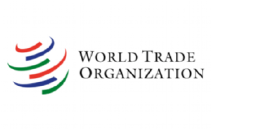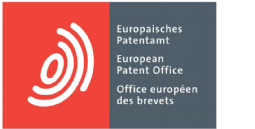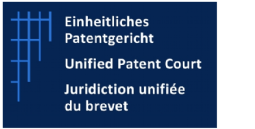This edition features updates from: The World Trade Organization, the European Patent Office (EPO) and the Unified Patent Court (UPC).
The Irides Weekly Update is our round-up of patent litigation news highlights from around the world. Taking its name from the plural of “iris” - a nod to the ability of Irides to see what’s happening around the world.

World Trade Organization
EU prevails on appeal in dispute with China at the WTO regarding Chinese Anti-Suit Injunction policy.
A WTO Arbitrator’s Award has been issued in relation to the 2022 complaint brought by the EU against China regarding China’s alleged policy of issuing Anti-Suit Injunctions (ASIs) in Standard Essential Patent (SEP) cases. It was the EU's contention that China was in breach of its TRIPS obligations by establishing and encouraging a practice of Chinese Courts issuing ASIs that might hinder patent holders (including SEP holders) from pursuing injunctive relief in patent infringement proceedings before foreign Courts. While the EU's complaint was predominantly unsuccessful in the first instance decision issued by a WTO Panel in February 2025, this new Arbitrator's Award, which is for all intents and purposes an appellate decision, largely favours the EU position. The parties agreed to use the WTO Arbitration procedure as a de-facto forum for appeal in light of the formal WTO Appellate Body remaining inoperable due to ongoing blocking of new judicial appointments by the US. A related EU complaint against China’s practice of setting global royalty rates in SEP disputes is the subject of separate ongoing proceedings.
The EU alleged that China's ASI policy and five specific ASI decisions violated multiple provisions of the TRIPS Agreement, including Art. 1.1, 28.1, 28.2, 41.1, 44.1, and 63.1, as well as China's Accession Protocol. The Arbitrators upheld several of the EU’s claims, reversing key findings of the original panel. Perhaps the two most significant aspects of the decision were:
- upholding the Panel’s finding in relation to Art. 3.2 of Annex 2 of the WTO Agreement (Understanding on rules and procedures governing the settlement of disputes) that China maintained an unwritten ASI policy constituting a rule or norm of general and prospective application that went beyond the "simple repetition of a similar legal approach by Chinese courts in different cases where ASIs were requested"; and
- reversing the Panel's finding on how Art. 1.1, first sentence, of TRIPS should be interpreted, and thereby concluding that China was in violation of its TRIPS obligations given this new interpretation.
In relation to this second point, the Arbitrators found that a WTO Member's obligation under Art. 1.1 TRIPS, first sentence, is not limited merely to giving effect to the provisions of TRIPS in its territory. Rather, and contrary to the first instance finding by the Panel, the Arbitrators held that an inherent corollary to this obligation exists such that Members must fulfil these obligations "without frustrating the functioning of the systems of protection and enforcement of IP rights implemented by other Members in their respective territories". Interestingly, the UK made a third-party submission in the proceedings (alongside Australia and Japan), but unlike those other countries, the UK's position on the interpretation of Art 1.1 was mostly consistent with the unsuccessful Chinese view on the matter.
Having upheld the Panel's finding in relation to Art 3.2 of Annex 2 of the WTO Agreement and reversing their finding on Art 1.1 TRIPS, the Arbitrators went on to reverse the Panel's findings in relation to Art. 28.1 and 28.2 TRIPS, concluding that China's ASI policy was in violation of its obligations in both respects when those articles were interpreted in light of Art. 1.1 TRIPS. The Arbitrators agreed with the Panel that China's ASI policy did not violate Art. 41.1 or 44.1 TRIPS and also agreed that China's failure to publish the Wuhan Intermediate People’s Court ASI decision in Xiaomi v InterDigital was in breach of the transparency obligations of Art. 63.1 TRIPS, as it was a decision “of general application”. The Arbitrators declined to assess the five specific ASI decisions.
While this award affirms the importance of transparency in certain judicial decisions affecting IP rights, perhaps its more significant aspect is the extraterritorial limitation it puts on domestic IP enforcement policies under TRIPS, endorsing the principle that WTO Members must not frustrate the operation of IP systems in other jurisdictions. However, it should be noted that this limitation is tempered somewhat by its applicability only in situations where a concerted policy is in play and not merely the "simple repetition of a similar legal approach" in different cases before courts in a jurisdiction.

EPO
New referral to the EBA – G 1/25 (“Hydroponics”) concerning adaptation of the description to align with amended claims.
The EPO’s Technical Board of Appeal (TBA) 3.3.02 in interlocutory decision T 697/22 has referred case G 1/25 (“Hydroponics”) to the Enlarged Board of Appeal (EBA) under Art.112(1)(a) EPC. The referral asks whether, when amendments of claims are made during opposition or opposition-appeal proceedings that introduce an inconsistency with the description, the description must be adapted to remove that inconsistency in order to comply with the EPC. It also asks which EPC provision(s) would necessitate such an adaptation, and whether the answer would differ if the inconsistency instead arose during examination or examination‐appeal proceedings. The formal text of the questions referred is as follows:
- If the claims of a European patent are amended during opposition proceedings or opposition-appeal proceedings, and the amendment introduces an inconsistency between the amended claims and the description of the patent, is it necessary, to comply with the requirements of the EPC, to adapt the description to the amended claims so as to remove the inconsistency?
- If the first question is answered in the affirmative, which requirement(s) of the EPC necessitate(s) such an adaptation?
- Would the answer to questions 1 and 2 be different if the claims of a European patent application are amended during examination proceedings or examination-appeal proceedings, and the amendment introduces an inconsistency between the amended claims and the description of the patent application?
The referring decision concerns an opposition against EP 2 124 521, related to a hydroponics growth medium. An amendment made during opposition narrowed claim 1 significantly, requiring that an organic binder “must be based” on specific reaction products, whereas the embodiments in the description were broader. The Board concluded that this created an inconsistency and determined that allowability of the proposed amendment hinged on whether such inconsistencies must legally be removed.
This issue follows the landmark G 1/24 decision issued by the EBA earlier this year, which confirmed that for assessing patentability under Art. 52 to 57 EPC, the description and drawings must always be consulted to interpret the claims, not only when the claims are ambiguous. That ruling has served to increase the significance of misalignment between claims and description, strengthening the rationale for the current referral.
The referral was justified by two divergent lines of case law identified by the TBA: one requiring adaptation of the description (some citing Art. 84 EPC), and another denying any legal basis in the EPC for such a requirement (notably T 56/21). This referral aims to resolve that split.
If the EBA finds the referral admissible, its decision will hopefully clarify whether description amendments are compulsory following claim amendments in opposition or examination and, if so, which EPC articles underpin such a requirement, and whether there’s any difference between post‑grant and pre‑grant amendments. Such an outcome is expected to have wide implications for drafting strategies and prosecution costs.

UPC
UPC interprets saisie order narrowly and rejects application for a penalty order.
On 25 July 2025, the Mannheim Local Division rejected Centripetal Limited's application for a penalty order against Palo Alto Networks following difficulties in the execution of a saisie order (itself the subject of an earlier decision of the Court of Appeal), the scope of which allowed Centripetal to monitor Palo Alto's encrypted network security system at their Munich office.
When Centripetal went to execute the sasie, they found that Palo Alto's Munich premises was a co-working space, at which only one sales person worked, who did not have any access to the layers of the system Centripetal wanted to monitor under the order. Palo Alto refused to set up access rights for this sales person from their US headquarters and the execution of the order was thereby frustrated.
The case is a good illustration that saisie orders will be interpreted narrowly. The Munich premises were specified in the text of the order and it was thus held that the inspection could not be extended to other locations. Furthermore, the right of inspection was held not to extend to what would effectively amount to an order to procure steps to ensure compliance (including no requirement for Palo Alto to set up any system that was not physically present at the premises listed in the order). The Court held that Palo Alto only had to “cooperate actively” to enable Centripetal to inspect the ordered premises, and in this case was under no obligation to increase the sales person's access rights so that Centripetal could access the encrypted security network, as this was not necessary for the sales person to carry out their duties.
Therefore, Palo Alto's conduct did not constitute a breach of the saisie order and no basis was found for imposing a penalty payment.

/Passle/5f3d6e345354880e28b1fb63/MediaLibrary/Images/2025-09-29-13-48-10-128-68da8e1af6347a2c4b96de4e.png)
/Passle/5f3d6e345354880e28b1fb63/SearchServiceImages/2025-12-23-10-01-04-004-694a6860001b94fa0352717d.jpg)
/Passle/5f3d6e345354880e28b1fb63/MediaLibrary/Images/2024-08-23-11-31-07-354-66c872fb971eecc249d83d40.png)
/Passle/5f3d6e345354880e28b1fb63/MediaLibrary/Images/2025-07-10-13-52-35-189-686fc5a39f23a993118ba1a0.png)